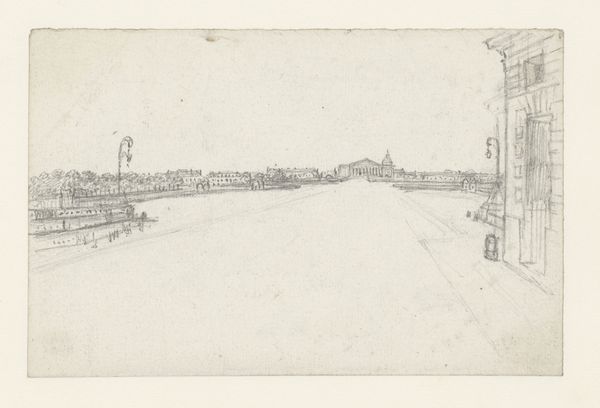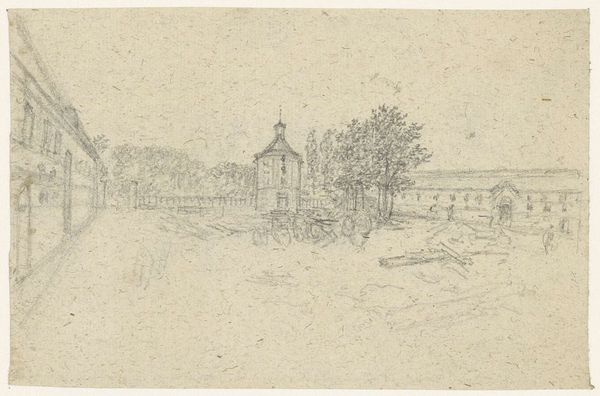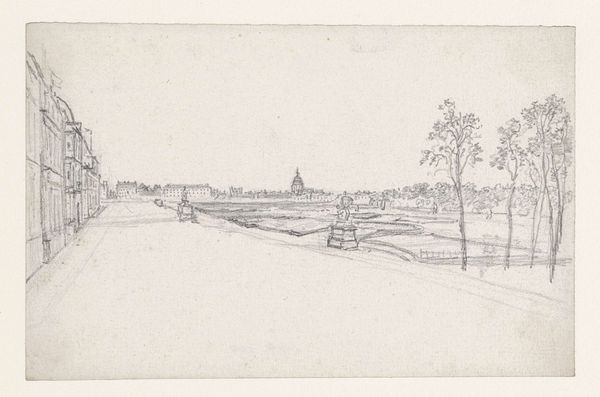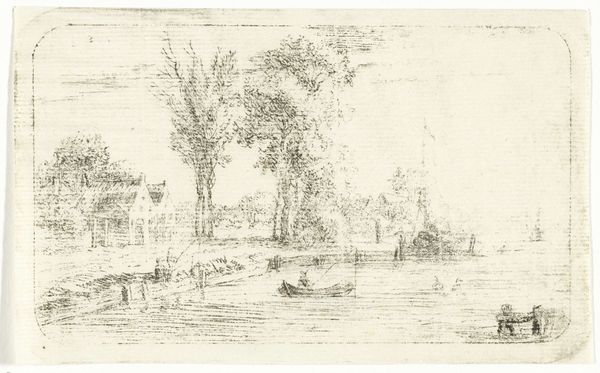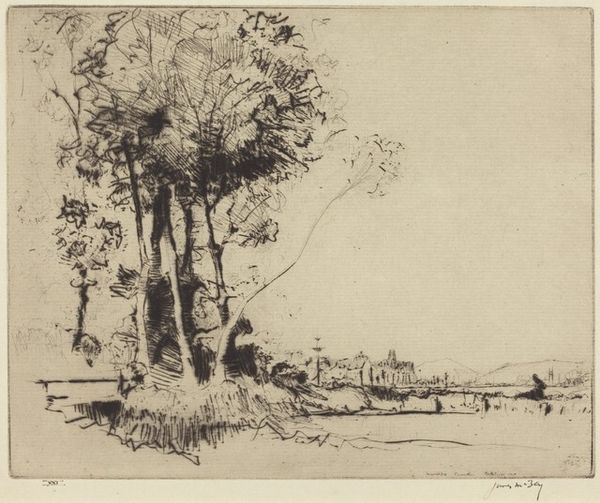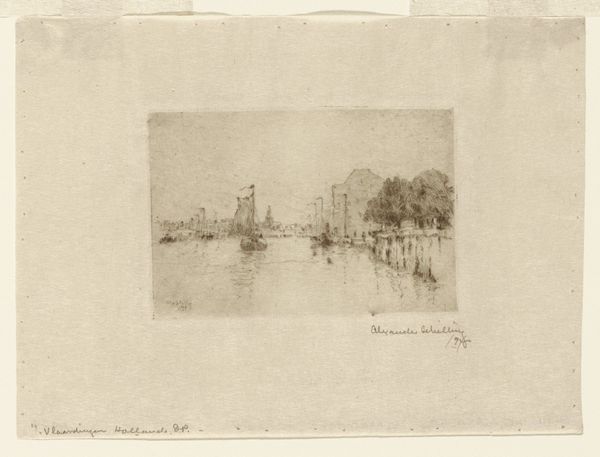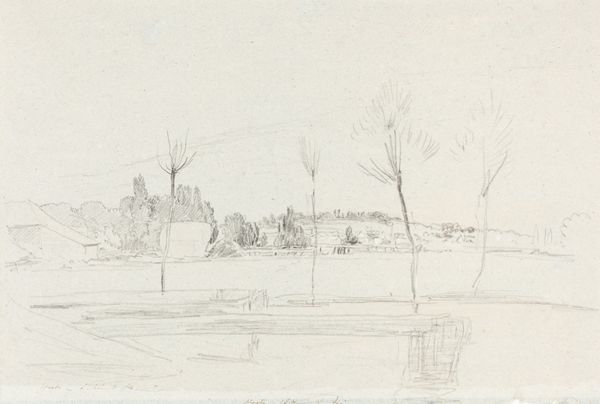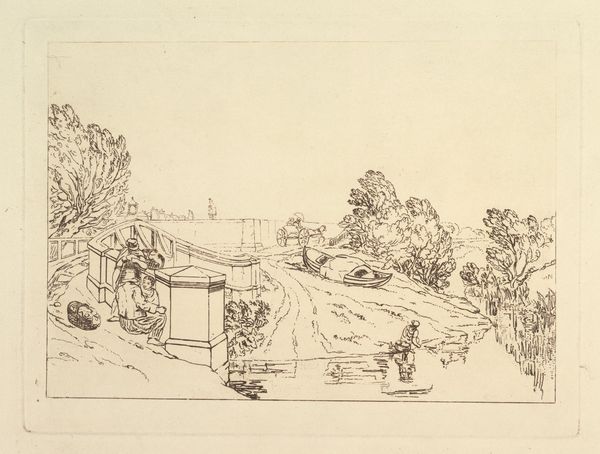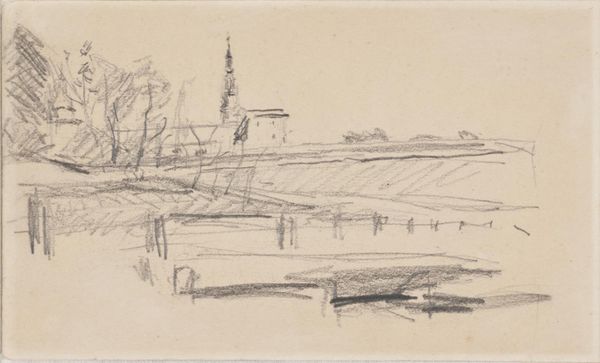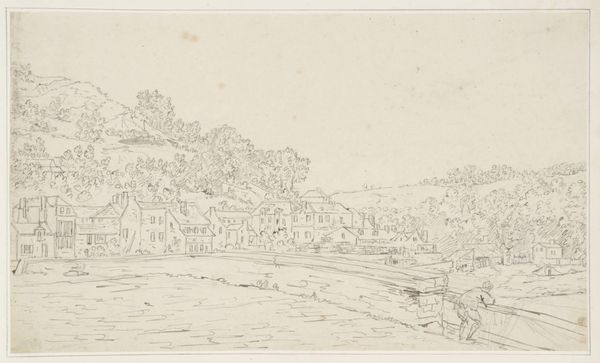
drawing, pencil
#
drawing
#
neoclacissism
#
pencil sketch
#
landscape
#
etching
#
pencil
Dimensions: height 100 mm, width 155 mm
Copyright: Rijks Museum: Open Domain
Curator: Immediately, I notice the sheer scale and emptiness conveyed by this simple pencil sketch of the Place de la Concorde. It’s haunting, somehow. Editor: And what strikes me, as I look at Georges Michel's drawing, made anytime from 1773 to 1843, is its ghostly premonition of major historic change; the architecture is all classical lines and measured elegance but devoid of life beyond a few sparsely scattered figures. It looks barren. Curator: The emptiness contributes significantly to the emotional weight here. Consider Place de la Concorde's turbulent history. Initially named Place Louis XV, it was the site of royal celebrations—then, of course, the site of countless executions, a theatre of the Revolution's bloodiest acts. This barrenness is perhaps symbolic, reflecting a psychic residue of collective trauma. Editor: Precisely. It is vital to remember the socio-political turmoil and the executions which led to the square being renamed three times over the years—a very contested public space. Michel focuses instead on these symmetrical facades and that slightly absurd decorative architecture. In this context, one might be forgiven for seeing them as hollow symbols of power or authority, rendered obsolete by violence. Curator: Or even standing defiant and indifferent to the turmoil as they seem to memorialise the virtues of classicism during a period of tremendous social upheaval. Think about it—the symbolism in the very geometry! Each line meticulously drawn is laden with potential meaning. It seems caught in the moment between memorialising power and observing great social disruption. Editor: That's a good point; Michel invites us to meditate upon not just the Place itself but what was lost—and gained—there over time through collective and state-orchestrated action. How can an urban space contain such extremes? This seemingly understated piece hints at an enormous history beneath the surface. Curator: For me, this piece is an example of visual continuity that can evoke an array of emotions and understandings, both historic and psychic. I am sure people in Michel’s time also recognised the scene while imbuing it with a sense of cultural grief and hope. Editor: Absolutely, this work presents a landscape of ideological conflict.
Comments
No comments
Be the first to comment and join the conversation on the ultimate creative platform.

